Now that autumn slowly but surely kicks in many ship owners are sailing their last miles and start the annual ritual: Emptying the boat, getting the cushions stowed in a dry place, taking down the rigging and having the boat hoisted in the local marina to be put on dry land over winter time. Winterizing is a huge thing for a boat and we will take on this issue – engine, fresh water circle et cetera – in upcoming articles. This series is dedicated to another very important topic: Antifouling.
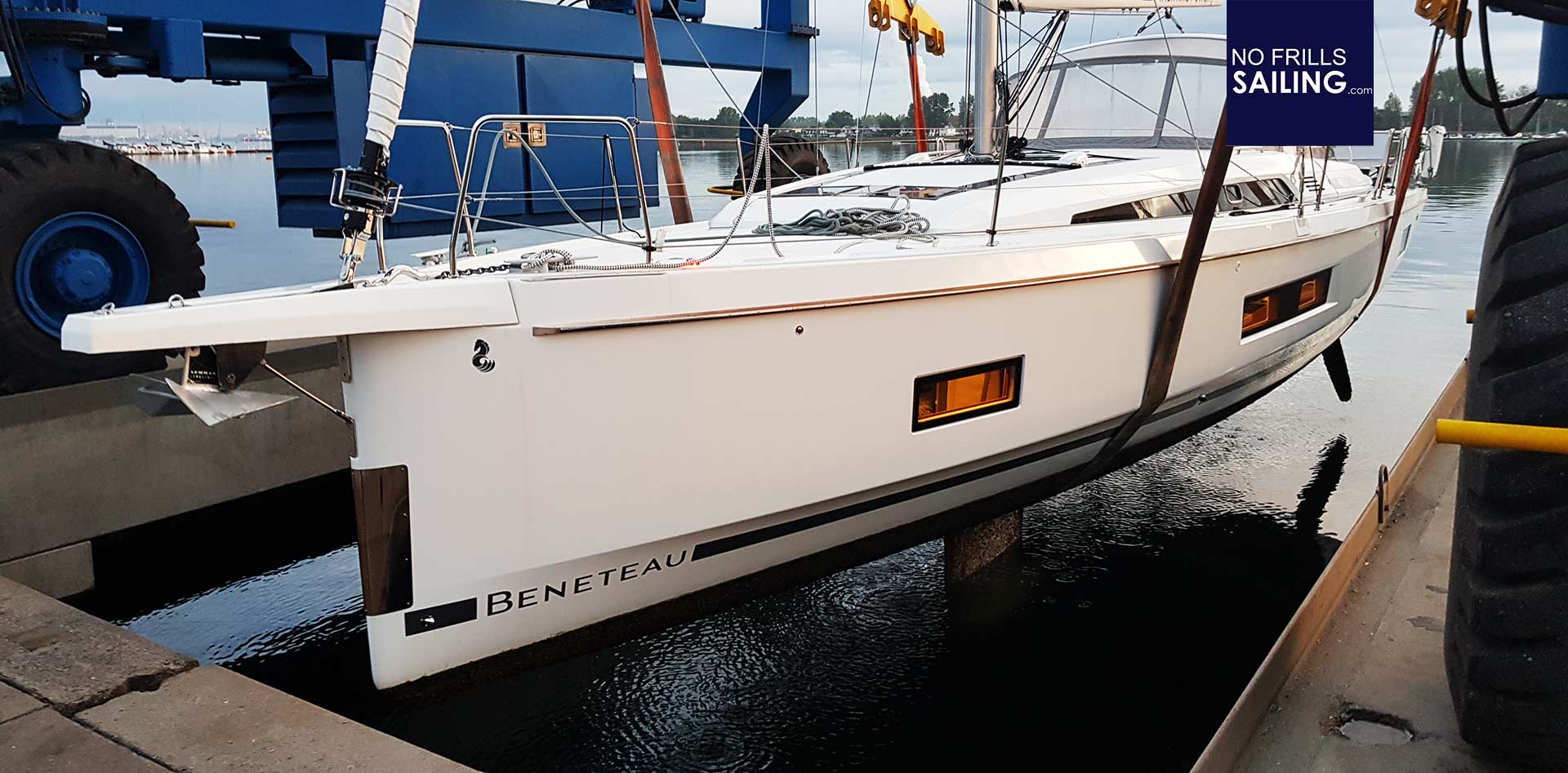
I am writing on that issue because of a recent occasion that really opened my eyes – the hard way, one might say. When our company received the then brand-new Beneteau Oceanis 46.1 it was pretty tight: We had a boat show coming up and were sitting on red glowing coal when the boat finally arrived from France, giving us just two days for the commissioning. That´s really tough since a professional commissioning of a boat this size usually takes one and a half to two weeks – it´s a huge, complex puzzle. So, our riggers worked night and day to get the boat ready to sail – skipping the antifouling part. Now, it gets exciting.
What happens without Antifouling?
As you might all experience in your own jobs, items to be crossed off a list sometimes remain on that list, being shifted to least important priority ever since new items appear. The firefighter-effect. Same happened here: After the boat show more boat shows had to be tackled and so our fine Oceanis 46.1 remained at the jetty. From May until virtually now. I never had a chance to take her out have the antifouling done nor did we really used the boat for sailing. So, eventually, nature began her work. And boy, she did work hard!
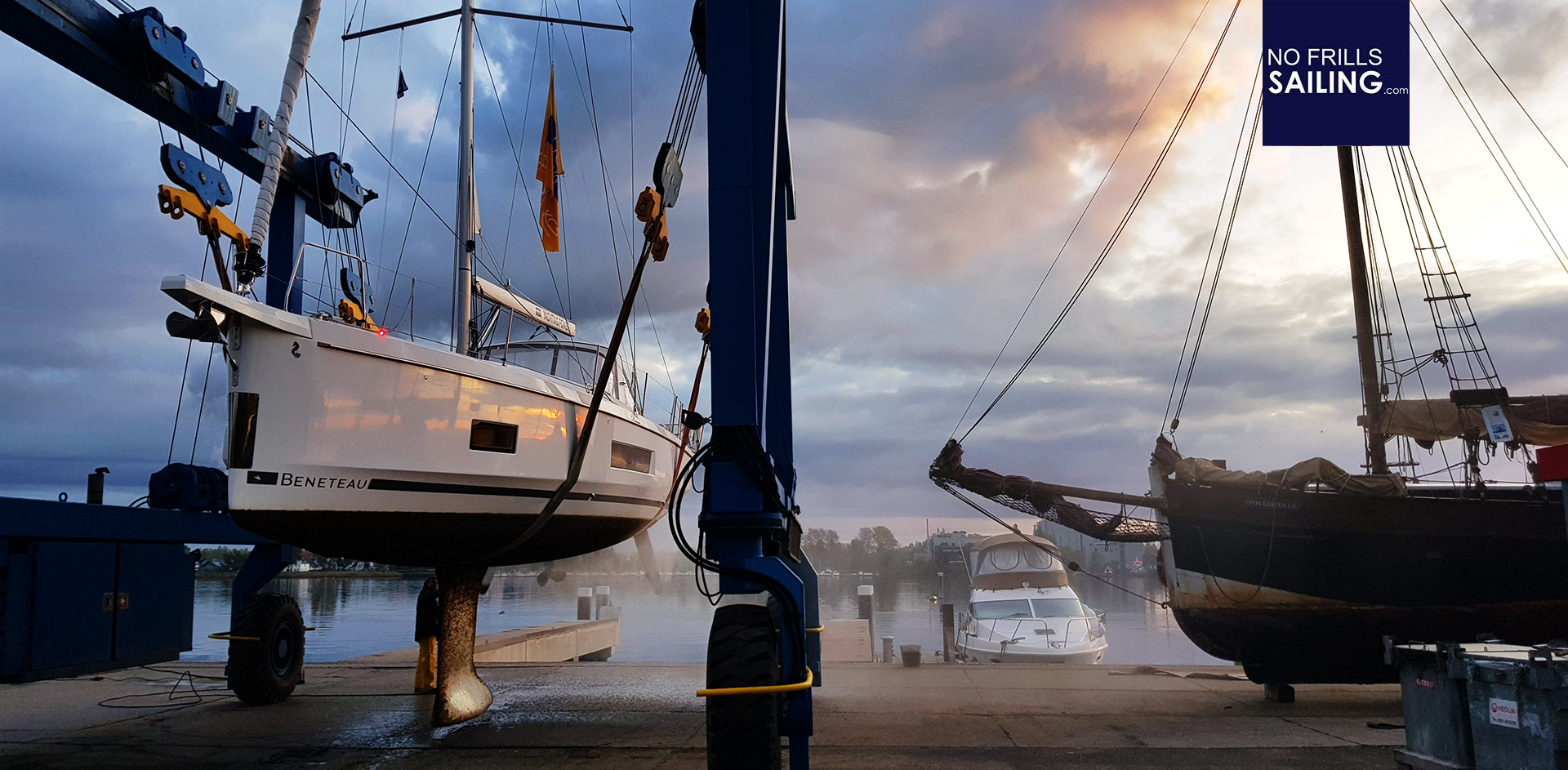
After a last sea trial with a customer when I transferred the yacht to another harbor, I noticed that she was very, very slow. And I mean really slow. On a beam reach in winds with 14 to 16 knots under full canvas she barely logged 6 knots. That´s far far, far too slow for a modern racy hull like the one of the Oceanis 46.1. And pretty embarrassing too: Here I realized first hand how important a real smooth hull and thus a vortex-free flow of water around the hull really is. Not having this is bringing your boat literally to a stand still.
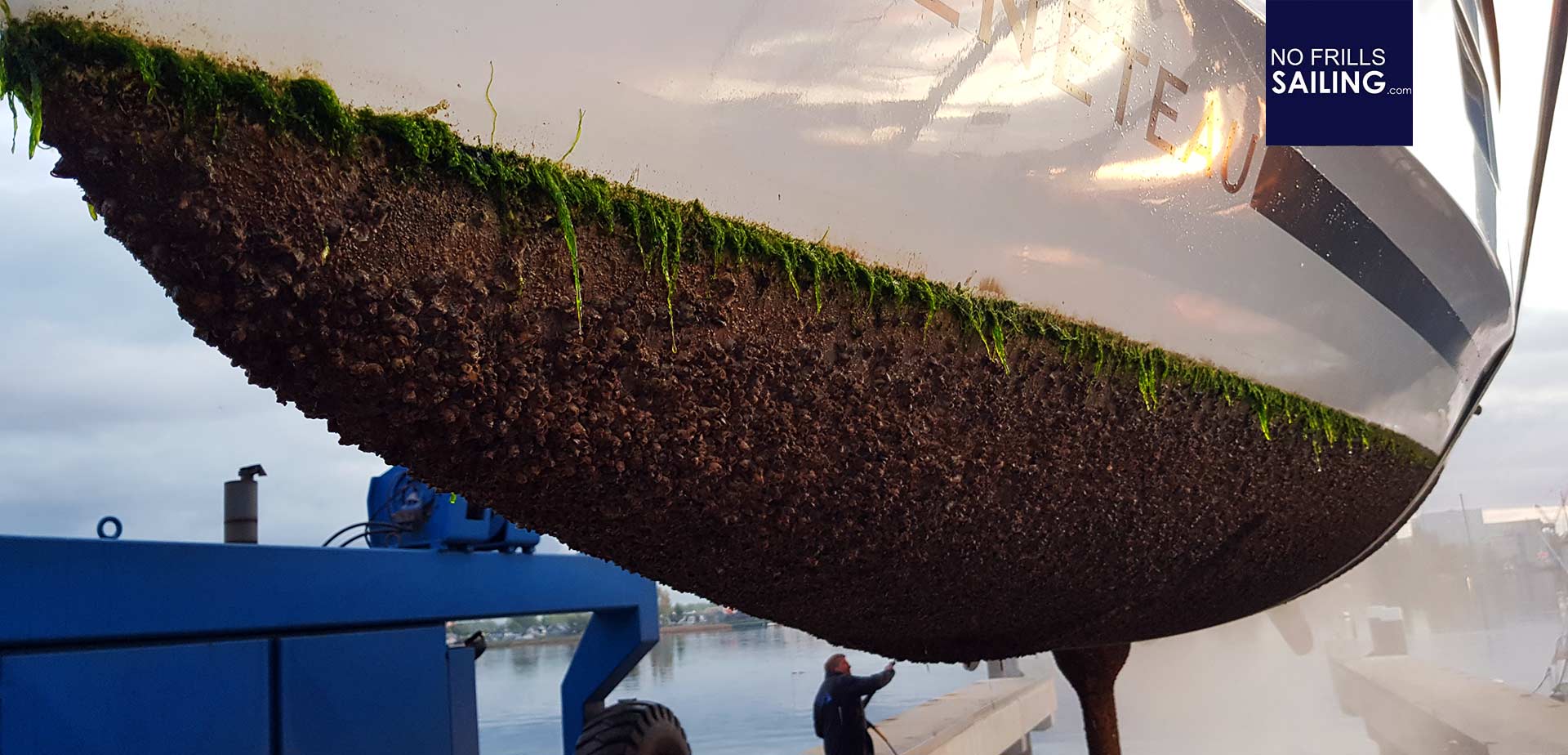
So we decided that it was time to take her out of the water and have the hull cleaned. Early in the morning, right when the sun started to rise, the TravelLift slowly hauled her hull out of the water – and my breath stopped! The boat looked a bit pitiful being fully enclosed by marine life: Little, just half a centimeter big mussels had been forming a thick layer of encrustation on the hull.
Why removing marine life from a hull is a matter of course
It was a mess, to be honest. The encrustation already had been building up to a thickness of more than 3 centimetres all over the hull with three, sometimes four layers of mussels growing on top of each other. Nature had done quite an amazing work: Our rigger´s marina is a lateral of the Trave, a river that flows through the City of Luebeck. This branch of the river has almost no moving water: In a hot summer like the past one that´s perfect conditions for marine life to develop.

Having an encrustation like this is a safety risk par excellence: When I steered the boat to the yard where she was taken out of the water, I noticed her poor reaction to the helm. Luckily the bow thruster wasn´t that much affected, but still everything that made the Beneteau Oceanis 46.1 such a quick responding, featherlight, speedy sailboat was gone. Worse: As we had to use the engine to that marina for over one hour, I noticed that almost no cooling water was flowing in the system. The reason was simple: Mussels had been clogging the water intake at the saildrive.
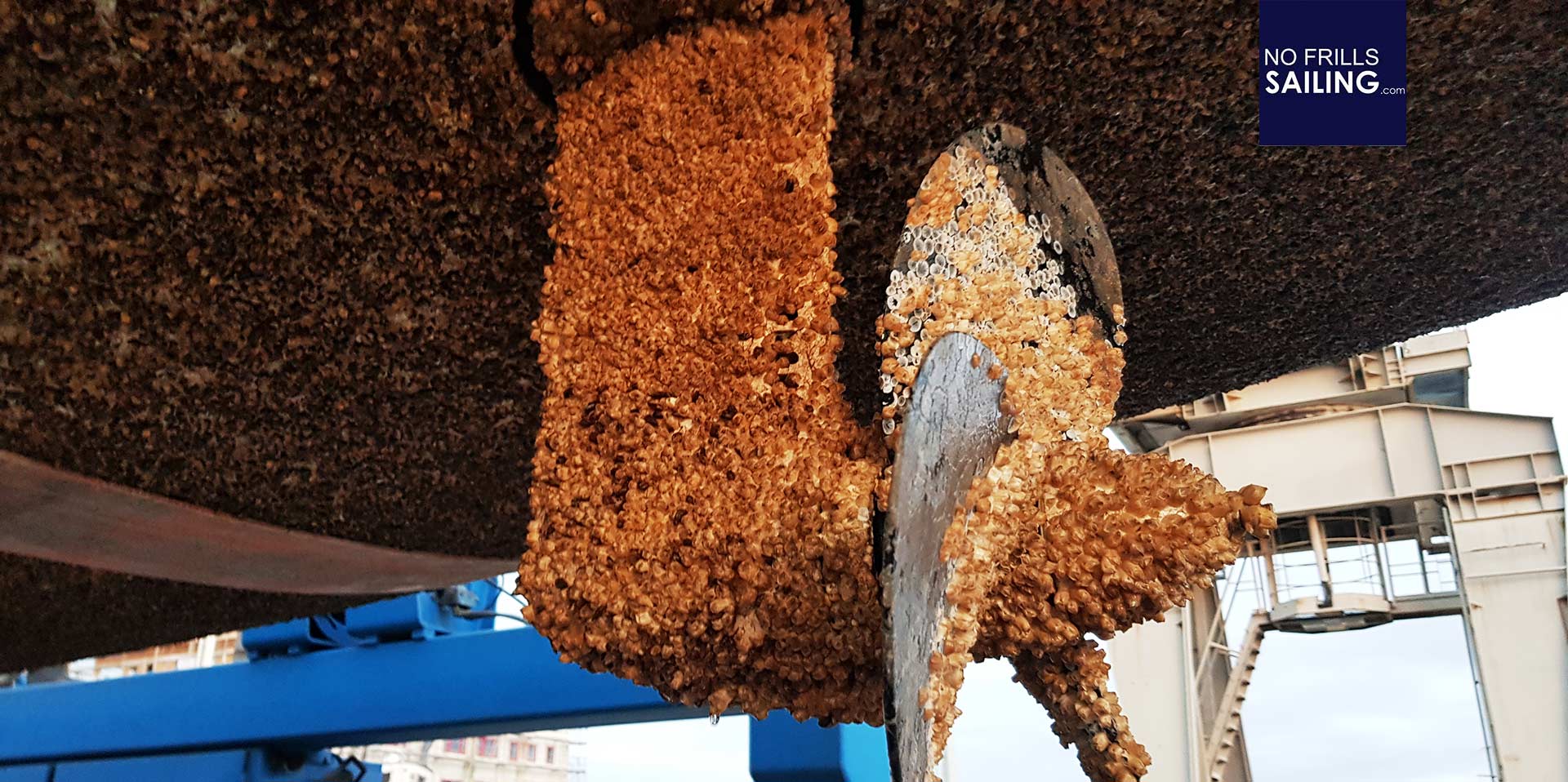
Here´s where the fun part kicks in: Loosing the engine on a big boat like this whilst being in the middle of a commercial waterway with no wind and poor steering capabilities … is possibly one of the worst nightmares of a skipper. Luckily the intake wasn´t completely clogged so that we made it to the yard without major problems. Nevertheless, with 2.000 rpm the boat barely made 5.9 knots …
Cleaning the hull from encrustation
Getting rid of such a thick and hard layer of marine life is hard work. First of all you need a strong high pressure waterjet, and I mean a pro-tool, not those hobby spraying tools from the home improvement store. My colleague was smart enough to having ordered the yard to provide us with such a professional tool and so we started to work on the hull.
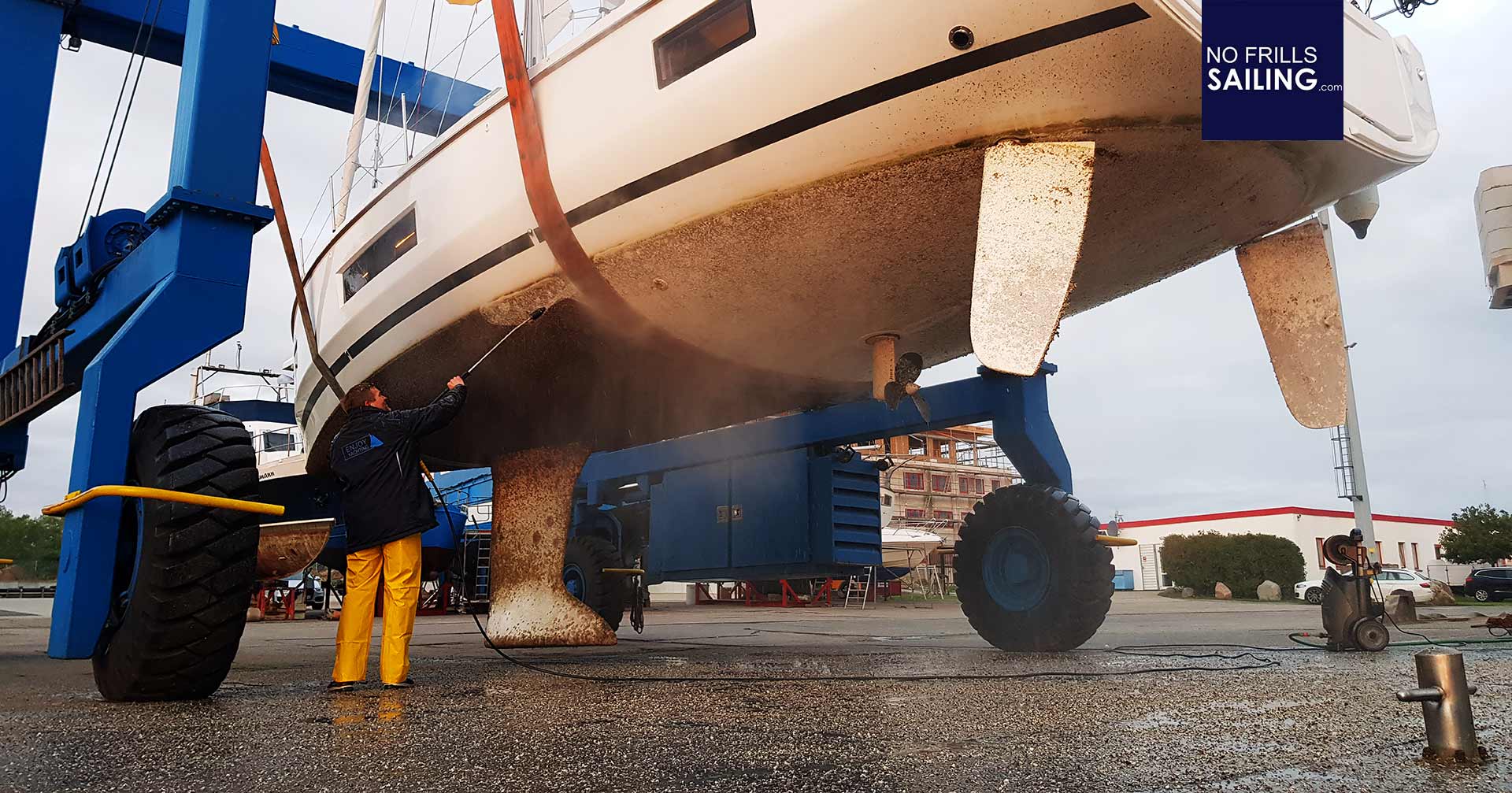
Best way to blast off the mussels is to hit them with a 45 degree angle. That immediately knocks them off the hull. I was deeply relieved seeing the pressure waterjet being able to take on the encrustation because using mechanical devices – for example to scrub off the mussels – poses the risk of harming the GRP-made hull and damaging the Gelcoat-barrier.
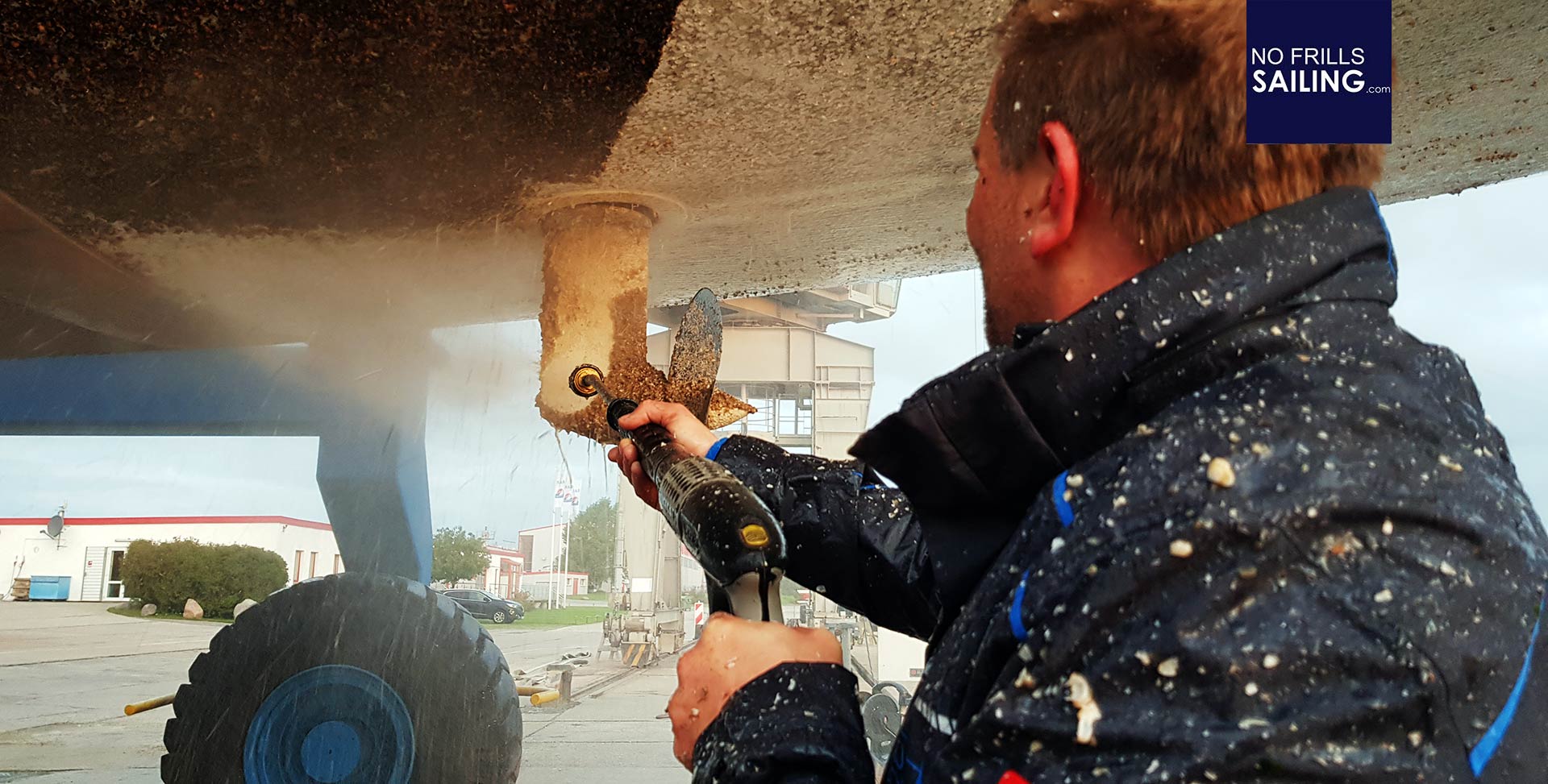
The Kärcher waterjet worked just fine. Minute by minute more of the black-brown mussels blew off the hull and whilst the sun was coming up the whole working places started to smell like a fish market in France after closing time in the afternoon: Not so yummy.
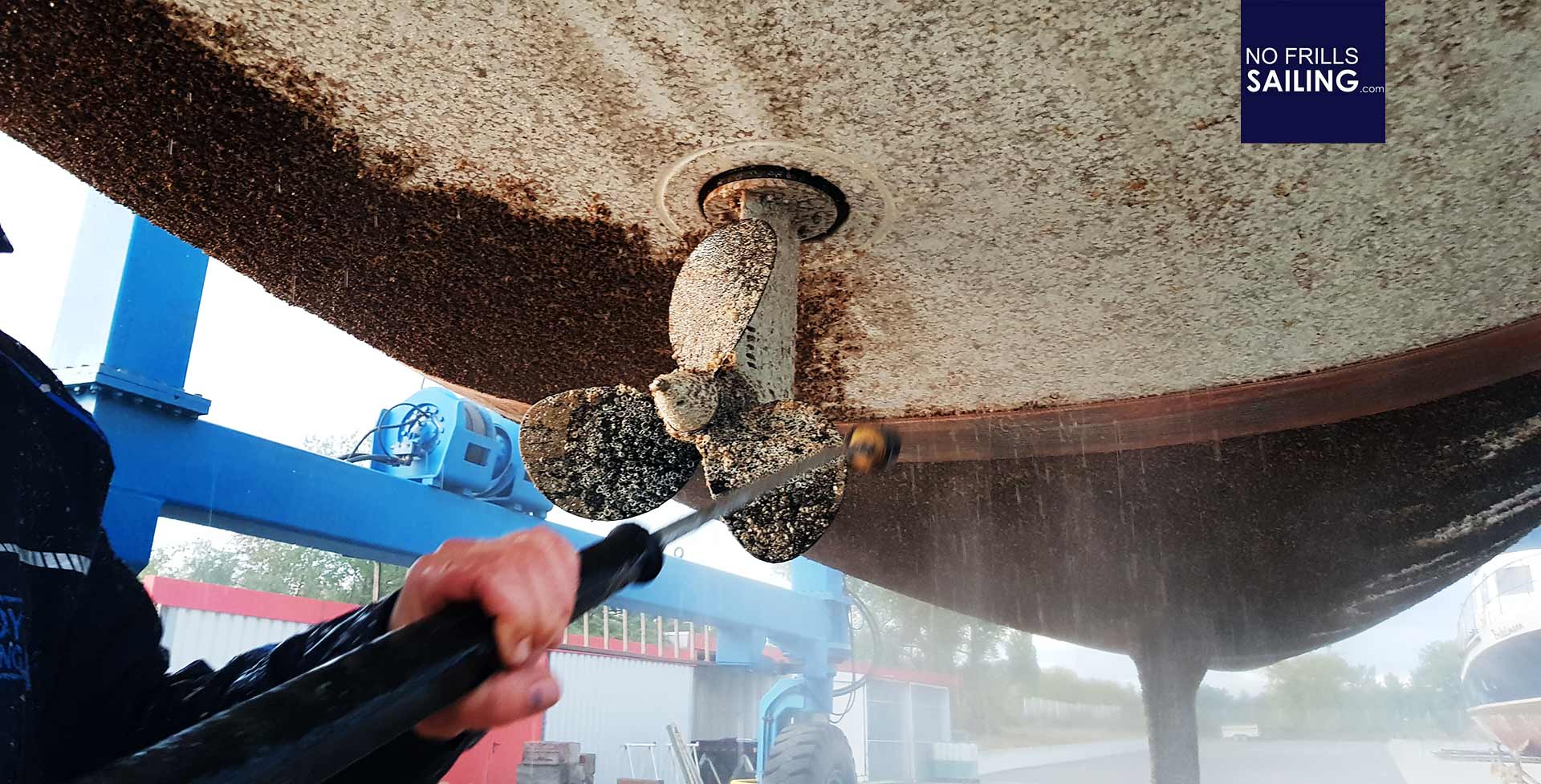
The waterjet managed to get clean the hull pretty nicely. But it still could not manage to get rid of the last (or let´s say: The first) layer of marine life. That´s a cement-like small bumpy layer of the base or foundation on which the mussels had been growing. So a small, rough crust still remained on the hull. This is a layer of really hardened material that can only be removed by sanding machines in the hands of skilled people. As we´ve had appointments up, that’s a job that has to be done later.
One hundred kilograms of mussels …
Can you guess how many mussels our 14 meters hull lost over the course of her rough cleaning? It took me a quarter of an hour to pile up the mussels to one big mountain of dead mussels. We were shipping away more than three fully filled pushkarts full of mussels. Imagine the smell …
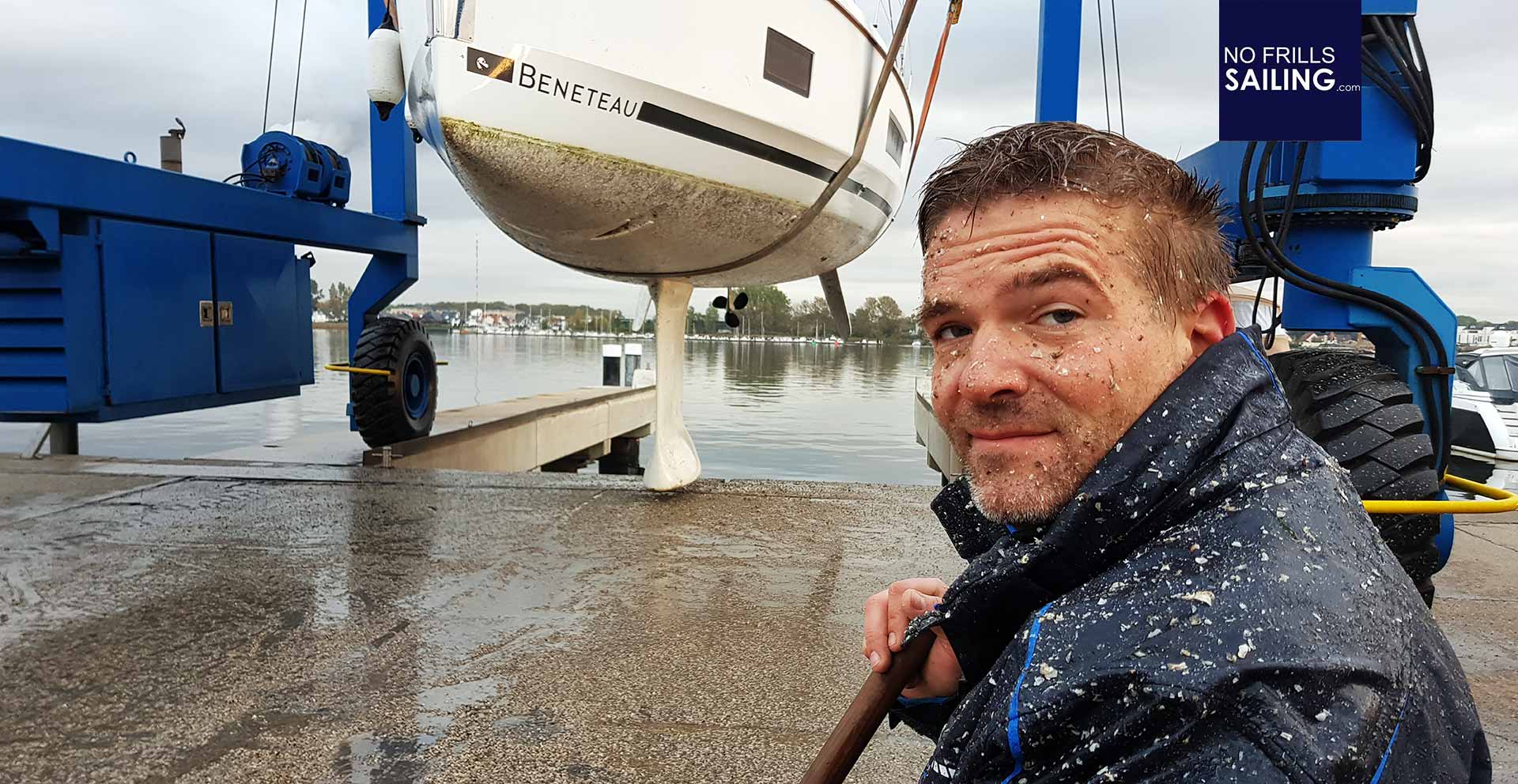
What have we learned? Well, nature is quick and conquers every corner of earth – much, much faster and more relentlessly than you can imagine. Life can settle on all materials and can develop everywhere – even on a plastic hull of a boat. From May to September, that´s half a year, our pretty nice and shiny brand new yacht has been turned into a barely moving reef – by lifeforms which are smaller than my finger´s tumbnail.

A boat needs a good antifouling. It just needs it. Saving money on that issue is the most stupid thing a skipper can do: You wouldn´t drive around in a Porsche and save money on low-cost tyres. It´s just stupid. So, a smooth hull, free of encrustation or other forms of marine life is a must-have and skippers should save time nor money on that issue.
Coming up next: Professional Antifouling, readying the hull
When our freshly cleaned Oceanis was back in the water and we steamed back to the marina, the same engine with the same propeller on the same 2.000 rpm-mode was able to propel our boat with 6.9 to 7.2 knots. See the difference?

In Part 2 of this series we will take a look on how to sand the Gelcoat-layer of the bare hull of a yacht and apply the primer coatings of the antifouling. We will also address the topic of Osmosis and when protection against Osmosis is advised.
You might also like to read these articles:
Chain Plate refurbishment, Parts 1, 2 and 3
Steel is real: Meet the Berckemeyer BM 36
At Multiplast in Vannes: A tour of Secrets
